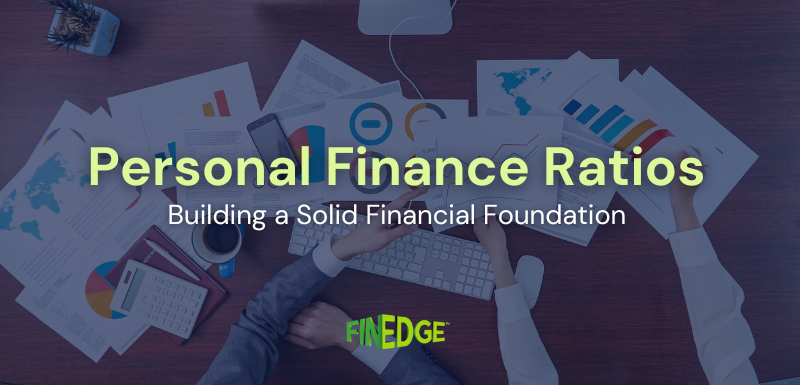Financial Awareness Day: How to Identify and Protect Yourself from Financial Frauds
- Why financial awareness is a non-negotiable skill in today’s India
- Detailed breakdown of common financial frauds and how they operate
- Step-by-step safety net to protect your savings
- Practical habits to stay alert and scam-proof
Frauds are evolving, but so can your defense. Here’s your guide to staying financially safe in today’s world.
Why Financial Awareness Matters More Than Ever
As India’s economy grows and more people access digital banking, UPI payments, and online investing, the convenience of managing money has never been higher. But with this convenience comes a rising wave of sophisticated frauds.
Scammers are not just targeting the uninformed; they’re exploiting tech-savvy users who get too comfortable, clicking links without verifying, or trusting “official-looking” calls. The impact of financial fraud isn’t just monetary; it erodes trust, creates emotional stress, and can derail long-term financial goals.
In short, financial awareness isn’t optional; it’s your first line of defense
Types of Financial Frauds and How They Work
Fraudsters today are using both old-school tricks and advanced technology to target unsuspecting investors. Understanding how these scams operate is your first step to avoiding them. Here’s a closer look:
1. Ponzi & Pyramid Schemes
These scams have been around for decades, but still trap thousands every year, often because they disguise themselves as “exclusive investment opportunities.” The fraudster promises high, consistent returns (sometimes even monthly payouts) and uses money from new investors to pay existing ones. There’s no real profit; it’s just money being shuffled around until the flow stops and the scheme collapses.
Why people fall for it: A friend or relative may recommend it, or the scheme may have a polished website and professional branding that looks legitimate.
Your defense: Treat any “guaranteed” high-return pitch as a red flag. Before investing, verify the company’s SEBI registration, research its track record, and understand exactly how profits are generated. If the model is unclear, walk away.
2. Mis-selling of Financial or Insurance Products
This isn’t an outright scam, but it’s a common way people lose money. Here, a salesperson convinces you to buy a product, like a market-linked insurance plan or a long-term lock-in scheme, that doesn’t suit your goals or risk appetite. Sometimes, crucial risk disclosures are skipped entirely.
Real-world example: An investor wanting safe retirement income ends up with an aggressive equity-heavy plan because it offers “better returns,” but later panics during a market downturn and exits at a loss.
Your defense: Always ask, “How does this fit my goal?” Read the policy or offer documents in full and take 24 hours to think before signing anything.
3. Churning
In investing, “churning” means frequent buying and selling of investments, not to benefit you, but to generate more commissions for the broker or seller. While portfolio adjustments are normal, excessive switching without a clear reason can drain your returns.
Your defense: Review your statements regularly. If there are frequent changes, ask for written justifications. A genuine advisor will give a clear, goal-based explanation; a mis-seller will give vague answers.
4. UPI & QR Code Fraud
UPI has revolutionized payments, but it’s also a favorite playground for scammers. They send a QR code asking you to “receive money” — but scanning it actually sends money from your account.
Your defense: Never scan a QR code from an unknown sender. Double-check UPI requests and, when in doubt, call the person or company directly to confirm.
5. Phishing & Smishing
Phishing emails and smishing text messages look official, often copying the exact branding of banks, e-commerce sites, or government agencies, but contain malicious links that steal your details.
Your defense: Always check the sender’s address or number. Be wary of urgent, fear-based messages (“Your account will be blocked in 2 hours!”). When in doubt, log in directly through the official website instead of clicking a link.
6. KYC Fraud
With more services requiring KYC verification, scammers have found ways to misuse this. They may pretend to be from your bank or broker, requesting KYC updates via WhatsApp or unofficial websites. Once they have your ID documents, they can open fraudulent accounts in your name.
Your defense: Only share KYC documents with verified, authorized entities, and preferably in person or through official portals.
7. Loan App Scams (A Growing Threat)
Fraudulent loan apps offer instant cash, but with hidden charges and outrageous interest rates. Some even harass borrowers by accessing their contact list and threatening public shaming.
Your defense: Use only RBI-approved lending platforms. Check the app’s official website and RBI’s list of registered NBFCs before applying.
8. SIM Swap Fraud
In this tech-heavy scam, fraudsters trick your mobile provider into issuing them a duplicate SIM. Once activated, they receive your OTPs and can drain your accounts.
Your defense: Set up SIM change alerts with your telecom provider and investigate immediately if your phone loses network for an unusual amount of time.
Building Your Financial Safety Net
1. Avoiding scams isn’t about paranoia — it’s about putting proactive systems in place so you’re always protected.
2. Educate Yourself Continuously – Stay updated with SEBI, RBI, and NPCI advisories. New scam methods appear every month.
3. Enable Two-Factor Authentication – This extra step makes it far harder for fraudsters to access your accounts.
4. Use Trusted Platforms Only – Stick to SEBI-registered intermediaries for investments and RBI-approved lenders for loans.
5. Review Statements Regularly – Early detection often limits damage.
6. Limit Information Sharing – Personal details can be pieced together from social media to impersonate you.
7. Have an Emergency Fund – In case you face fraud-related losses, this buffer avoids panic borrowing.
8. Stay Scam-Aware – The best protection is knowing what to look for before it happens.
Conclusion: Awareness is Freedom
Financial awareness doesn’t mean living in constant suspicion; it means having the confidence to make money decisions without fear. The scams may evolve, but the fundamentals of protection remain the same: verify, question, and never rush.
On this Financial Awareness Day, take 15 minutes to review your financial safety practices. Because in a world of fast-moving money and faster-moving scams, awareness isn’t just a skill, it’s your shield.
FAQs
Your Investing Experts
Continue Reading
Understanding the Financial Planning Pyramid: Building Your Finances the Right Way
Most people juggle several financial goals at once, an emergency fund, retirement planning, a child’s education, or even short-term lifestyle goals like travel. Without a proper framework, it becomes difficult to decide what to tackle first. The Financial Planning Pyramid offers a simple and effective way to bring structure to your financial life. It ensures that essential protections are in place before you start saving and investing for long-term wealth.
Personal Finance Ratios You Should Understand Before You Start Investing
Successful investing begins long before you pick funds or set return expectations. It starts with understanding your financial foundation, how much you earn, how much you spend, and how much is left to invest consistently. These simple but powerful personal finance ratios offer a clear view of your financial health and help you make informed, goal-aligned decisions.
How to Categorise Financial Goals: Short, Medium, and Long-Term Goals Explained
Before we get into strategies and structures, it’s important to understand the value of categorising financial goals. Every individual has a unique set of aspirations, but not all goals carry the same urgency or impact. By breaking them down clearly, you can build a systematic, purpose-driven investment plan tailored to your life.
.png)


.jpg)